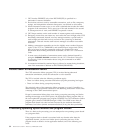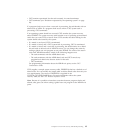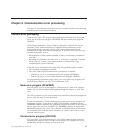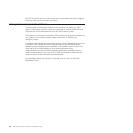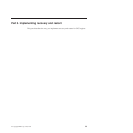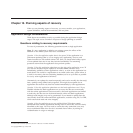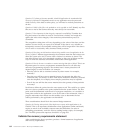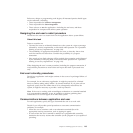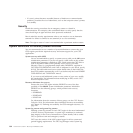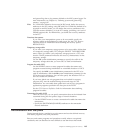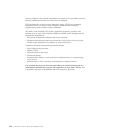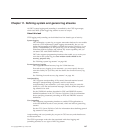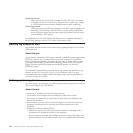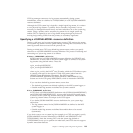Question 5: If a data set becomes unusable, should all applications be terminated while
recovery is performed? If degraded service to any application must be preserved
while recovery of the data set takes place, you will need to include procedures to
do this.
Question 6: Which of the files to be updated are to be regarded as vital? Identify any files
that are so vital to the business that they must always be recoverable.
Question 7: How important is data integrity, compared to availability? Consider how
long the business can afford to wait for a record that is locked, and weigh this
against the risks to data integrity if the normal resynchronization process is
overridden.
The acceptable waiting time will vary depending on the value of the data, and the
number of users whom you expect to be affected. If the data is very valuable or
infrequently accessed, the acceptable waiting time will be longer than if the data is
of low value or accessed by many business-critical processes.
Question 8: How long can the business tolerate being unable to use the application in the
event of a failure? Indicate (approximately) the maximum time that the business can
allow the system to be out of service after a failure. Is it minutes or hours? The
time allowed may have to be negotiated according to the types of failure and the
ways in which the business can continue without the online application.
Question 9: How is the user to continue or restart entering data after a failure? This is an
important part of a recovery requirements statement because it can affect the
amount of programming required. The terminal user’s restart procedure will
depend largely on what is feasible—for example:
v Must the user be able to continue business by other means—for example,
manually?
v Does the user still have source material (papers, documents) that allow the
continued entry (or reentry) of data? If the source material is transitory (received
over the telephone, for example), more complex procedures may be required.
v Even if the user still has the source material, does the quantity of data preclude
its reentry?
Such factors define the point where the user restarts work. This could be at a point
that is as close as possible to the point reached before the system failure. The best
point could be determined with the aid of a progress transaction, or it could be at
some point earlier in the application—even at the start of the transaction. Note: a
progress transaction here means one that enables users to determine the last
actions performed by the application on their behalf.
These considerations should be in the external design statement.
Question 10: During what periods of the day do users expect online applications to be
available? This is an important consideration when applications (online and batch)
require so much of the available computer time that difficulties can arise in
scheduling precautionary work for recovery (taking backup copies, for example).
See “The RLS quiesce and unquiesce functions” on page 168.
Validate the recovery requirements statement
After considering the above questions, produce a formal statement of application
and recovery requirements.
102 CICS TS for z/OS 4.1: Recovery and Restart Guide



